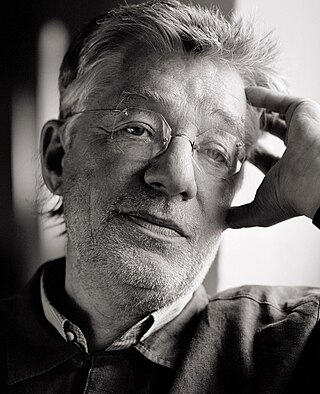
Botho Strauss is a German playwright, novelist, and essayist.

Peter Stein is a German theatre and opera director who established himself at the Schaubühne am Lehniner Platz, a company that he brought to the forefront of German theatre.
The Zodiak Free Arts Lab, sometimes known as the "Zodiak Club" or "Zodiac Club", was a short-lived but highly influential experimental live music venue, founded in the then West Berlin in spring 1968 by German artists/musicians Conrad Schnitzler (1937–2011) and Hans-Joachim Roedelius, together with Boris Schaak (1942–2012).
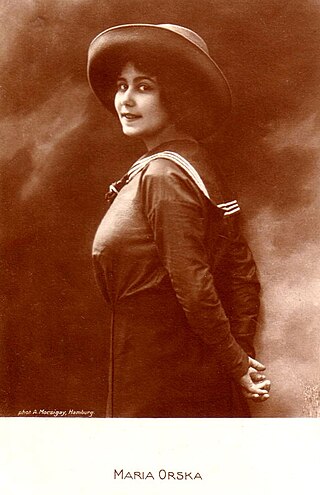
Maria Orska was an important actress of the German theater and cinema in the 1920s.
Downfall of the Egotist Johann Fatzer is an unfinished play by Bertolt Brecht, written between 1926 and 1930. Translated as Downfall of the Egotist Johann Fatzer or Demise of the Egotist Johann Fatzer, the play is often called the Fatzer Fragment, or simply Fatzer.

Sasha Alexandra Waltz is a German choreographer, dancer and leader of the dance company Sasha Waltz and Guests.

The Lessing Theater was a theatre in the Mitte district of Berlin, Germany. It opened in 1888 and was destroyed in April 1945 in a bombing raid; its ruins were demolished after World War II.
Lichtburg has been a popular name for cinemas in Germany. Those in Berlin, Essen and Düsseldorf have been particularly famous; the Lichtburg in Oberhausen is the site of the International Short Film Festival Oberhausen, and Quernheim is the smallest municipality in Germany with a cinema, also called Lichtburg.

The Schiller Theater is a theatre building in Berlin, Germany. It is located in the central Charlottenburg district at Bismarckstraße 110, near Ernst-Reuter-Platz.
The Hebbel am Ufer (HAU) is a German theater company and international performance center in Berlin. It has three physical locations, and a digital theatre (HAU4).

The Linz State Theatre is a theatre in Linz, Austria. The largest theater in Upper Austria (OÖ), it consists of three venues: the Musiktheater am Volksgarten, the Schauspielhaus and the Kammerspiele on the Promenade in Linz. The theater is managed by OÖ. Theater und Orchester, which also operates the Bruckner Orchester Linz and is wholly owned by the province of Upper Austria via the OÖ Landesholding.
Sebastian Fischer was a German actor. He has also worked frequently as a voice actor, dubbing foreign-language films for release in Germany. The corner building is fully integrated into the row of houses at today's Stresemannstrasse 29 and represents the first work of a total of six other Berlin theater buildings by the architect. Together with the Theater am Halleschen Ufer and the Theater am Ufer, the Hebbel Theater has formed the Berlin theater institution Hebbel am Ufer (HAU) since 2003.
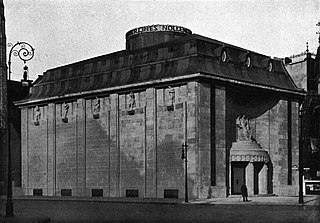
The Ufa-Pavillon am Nollendorfplatz was a cinema located at 4 Nollendorfplatz, Schöneberg, Berlin. Built in 1912–13 and designed and decorated by leading artistic practitioners of the day, it was the German capital's first purpose-built, free-standing cinema Described as "historically, [...] the most important cinema in Berlin", it incorporated a number of technical innovations such as an opening roof and a daylight projection screen, and opened as the Nollendorf-Theater in March 1913.

Städtische Bühnen Frankfurt is the municipal theatre company of Frankfurt, the largest city of Hesse Germany. The name dates back to 1919. The company is structured today in two organisations, Oper Frankfurt for opera, and Schauspiel Frankfurt for drama (Schauspiel).
Wilfried Happel is a German writer and theatre director.
Christof Nel is a German theatre and opera director. He began his career as an actor but moved on to direct opera productions at major opera houses.
The Berliner Kammeroper was a Berlin opera company with changing venues, founded in 1981 by Henry Akina and Brynmor Jones.
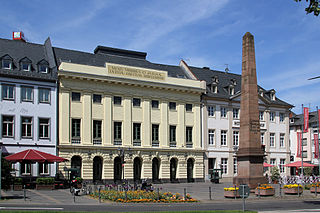
The Theater Koblenz is a multi-arts theatre with its own ensembles for drama, music theatre, puppetry and ballet located in Koblenz, Germany. It has about 190 permanent employees from 22 nations and offers 500 seats in a theatre building from the 18th century not far from the Electoral Palace. The manager until the end of the 2024/2025 season is Markus Dietze. Venues include the Theater am Deinhardplatz, rehearsal stages 2 and 4 as well as the Festung Ehrenbreitstein for the summer performances. In addition, the theatre participated in the Koblenz Fortress Plays for several years. In the 2009/2010 season, it was renamed from Theater der Stadt Koblenz to its current name.
Tanz im August is an annual festival for contemporary dance in Berlin. It was founded by Nele Hertling in West Berlin in 1988, and is now presented by the Hebbel am Ufer (HAU) theatre company on various stages in Berlin. It presents companies from all over the world with their new choreography, aesthetics and formats, new projects by Berlin artists, collaboration with international guests, and co-production for world premieres and German premieres. Virve Sutinen has been artistic director from 2014.
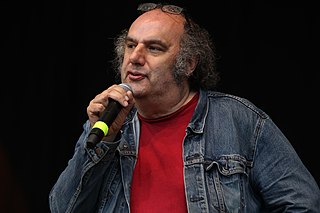
Matthias Lilienthal is a German dramaturge and theatre director.














